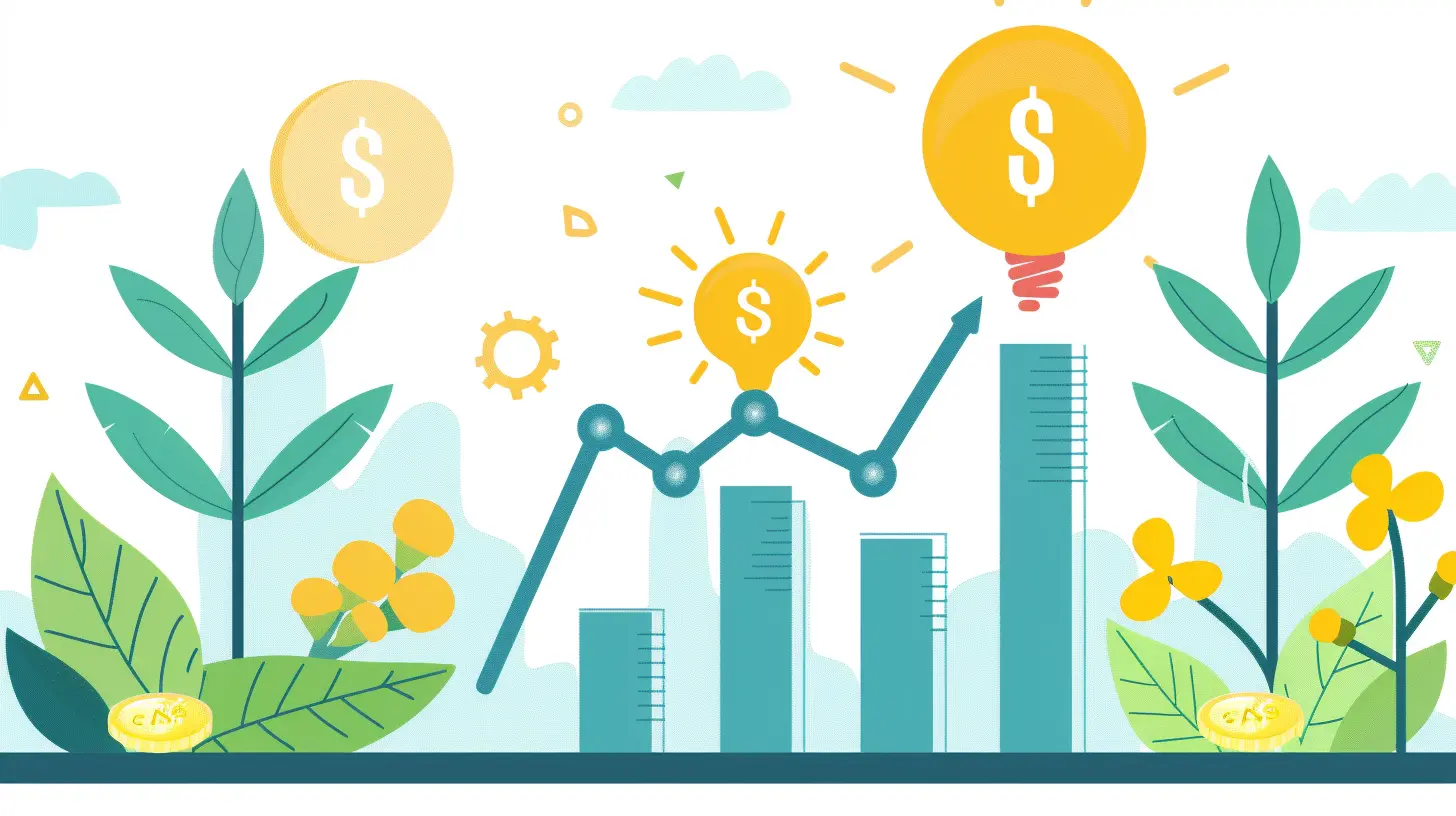The Importance of Product-Led Growth in SaaS
16 August 2025
Let’s face it—SaaS (Software as a Service) is booming. It’s like the gold rush of the digital age, and every company wants a piece of the pie. But here’s the thing: not all SaaS companies are growing the same way. Some spend big bucks on sales and marketing. Others? They let the product do the talking. That’s what we call Product-Led Growth (PLG), and if you haven’t embraced it yet, you're probably leaving serious money—and momentum—on the table.
So grab your coffee, settle in, and let me walk you through why PLG isn’t just some trendy buzzword... it’s the future of SaaS.
What Is Product-Led Growth, Really?
Imagine walking into a bakery and getting a free bite of a gooey, warm chocolate chip cookie. It’s so good, you buy a dozen on the spot—and tell your friends to do the same.That’s the heart of Product-Led Growth.
PLG is a business strategy where the product is the primary driver of customer acquisition, conversion, retention, and expansion. Instead of relying heavily on traditional sales teams, the product itself becomes the biggest selling point.
Think of companies like Slack, Dropbox, Zoom, and Notion. They didn’t beg for your attention—they earned it by delivering value right from the start.
Why Is PLG a Game-Changer in the SaaS World?
1. It Reduces Customer Acquisition Costs (CAC)
Traditional sales-led growth is like using a fishing net—you throw out a wide net, hoping to reel in a few good catches. PLG is more like fly fishing. It’s intentional, focused, and efficient.When your product markets itself through features, free tiers, and trial experiences, you don’t need to spend a fortune on ads or cold calls. Less friction. Lower costs. Higher margins.
That’s not just smart—that’s necessary in today’s competitive SaaS landscape.
2. Customers Try Before They Buy
Ever bought software based on a sales pitch, only to realize it doesn't do what you need? Frustrating, right?With PLG, customers get to try the product first. Whether it's through a freemium model or a free trial, users experience the value upfront. This transparency builds trust—and trust drives conversions.
If your product rocks, people will stick around. If it doesn’t, well... that’s a whole other conversation.
3. It Creates a Viral Loop
Here’s where things get fun.Great PLG products often build in virality. Think file-sharing links (Dropbox), collaborative tools (Figma), or meeting invites (Calendly). When users invite others or share content, they’re unintentionally marketing the product for you.
It’s like word-of-mouth on steroids. Your users become your best marketers—and they don’t even realize it.
4. PLG Fuels Faster, Scalable Growth
PLG isn’t just efficient—it’s scalable. Really scalable.Because your product is out there working 24/7, onboarding users, showcasing value, and encouraging engagement, you can grow without growing your costs linearly. That’s a dream come true for startups and scale-ups hungry for exponential growth.
The Core Pillars of a Successful PLG Strategy
Product-Led Growth isn’t just flipping a switch. It takes intention and alignment across your business. Here's what you need to make the magic happen.a. A Killer User Experience (UX)
First impressions matter. If your product is clunky, confusing, or slow, users will bounce—fast.Your UX should be intuitive and seamless. Users shouldn't need a PhD to understand how your tool works. Simplicity is key. If they can get value within minutes of signing up, you’re doing it right.
b. Self-Serve Onboarding
No one wants to sit through a demo just to get started anymore. Your onboarding process should be as self-serve as ordering fries at a fast-food kiosk.Guide users step-by-step. Use tooltips, walkthroughs, or videos. Make them feel smart, not dumb. Because if they can get to the "aha!" moment on their own, they’ll keep coming back.
c. Clear Value Metrics
What’s the “aha!” moment in your product? Is it sending a file, booking a meeting, designing a project?You need to identify that value metric and design your onboarding experience to get users to that point as quickly as possible. Once they hit that moment, they’re hooked.
d. Built-In Virality
Encourage sharing. Embed collaboration. Give users reasons to invite others. The goal is to turn every happy user into a walking billboard for your product.If your product spreads like wildfire among teams and departments, you’ve got virality. And that’s the secret sauce for PLG success.
PLG Isn’t Just for Startups Anymore
It’s easy to think PLG is only for scrappy, young startups trying to gain traction on a shoestring budget. But that’s not true anymore.Big names like Atlassian, HubSpot, and Adobe are embracing Product-Led Growth to complement their traditional strategies. They’re realizing that even enterprise-level clients prefer to try before they buy.
The modern buyer doesn’t want to talk to sales reps—they want to explore on their own terms. PLG meets them where they are.
The Role of Data in Product-Led Growth
You can’t drive growth if you don’t know what’s working.PLG thrives on data. You need to track user behavior, friction points, drop-offs, and engagement. It’s like having a GPS for your business—you’ll know where users are getting lost and where they’re having breakthroughs.
Tools like Amplitude, Mixpanel, or Heap can help you gather insights, test features, and iterate fast. Data is your compass. Don’t fly blind.
Success Stories: PLG in Action
Nothing beats real-world examples. Here are a few SaaS legends that nailed Product-Led Growth.Dropbox
They launched with a freemium model and built-in referral loop where users got more storage for inviting friends. It was simple, brilliant, and massively effective.Result? Explosive growth with minimal advertising.
Slack
No flashy sales campaigns. Just a product people loved using from day one. Teams invited other teams, and pretty soon, Slack became the default office communication tool.They let the product do the talking. And guess what? It spoke volumes.
Calendly
Calendly solved a simple problem: scheduling meetings. But it did it so well, it spread like wildfire.No sales pitch needed. Users experienced the convenience firsthand and started using it everywhere—from solo freelancers to massive teams.
How to Get Started With PLG
You don’t have to overhaul your entire business overnight. Start small, but be strategic.Step 1: Offer a Free Trial or Freemium Plan
Let users experience the product without friction. Keep it simple, but show enough value to hook them.Step 2: Invest in Onboarding
Nail the first-time experience. Help users get to that “aha!” moment fast.Consider drip emails, interactive guides, or even an AI-powered assistant inside the app.
Step 3: Track Everything
Use analytics tools to understand how users engage with your product. Tweak your flow based on data, not guesses.Step 4: Create a Feedback Loop
Listen to users. What do they love? What’s confusing? Use that feedback to iterate and improve your product continually.PLG is not “set it and forget it.” It’s a loop of testing, learning, and evolving.
Challenges to Watch Out For
Okay, PLG is awesome, but it’s not a magic wand. There are challenges you’ll need to tackle.- Users Expect Immediate Value
If your product is complex or takes time to set up, getting users to that “aha!” moment quickly can be tough. You may need to simplify or offer better walkthroughs.- One Size Doesn’t Fit All
Enterprise-level clients might still want consultative sales help. A hybrid model (PLG + sales assist) can bridge the gap.- Continuous Improvement Is a Must
With PLG, your product is your storefront, sales pitch, and support system. That means bugs, poor UX, or weak onboarding will cost you users fast.You're always a work in progress—and that’s okay.
Final Thoughts: PLG Isn’t the Future. It’s the Now.
Let’s wrap this up.The SaaS world is shifting rapidly, and customer expectations are higher than ever. People want to try before they buy. They want value, not promises. And they want to feel in control.
Product-Led Growth ticks all those boxes.
It’s authentic, efficient, and scalable. It aligns your goals with user success. And when done right, it turns your users into your biggest advocates.
So, if you’re building a SaaS product—big or small—start thinking product-first. Because at the end of the day, if your product isn’t driving growth, you’re standing still while others race ahead.
You’ve got this. Now go build something amazing.
all images in this post were generated using AI tools
Category:
Saas BusinessAuthor:

Remington McClain
Discussion
rate this article
1 comments
Azura Wyatt
Product-led growth (PLG) is a game changer for SaaS companies, prioritizing user experience and value delivery over traditional sales tactics. By empowering users to engage with the product directly, businesses can drive organic growth, enhance customer retention, and foster a sustainable competitive advantage in a crowded market.
September 12, 2025 at 2:17 AM

Remington McClain
Absolutely! PLG transforms the SaaS landscape by focusing on user experience and value, leading to organic growth and stronger retention. It's a vital strategy for standing out in a competitive market.


